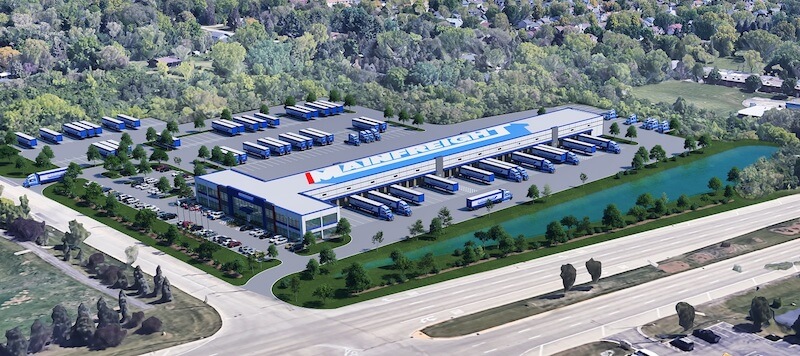Tom Barbera formed Industrial Outdoor Ventures in January 2017 with one goal: to carve a niche within industrial real estate from truck and trailer lots, container yards and freight terminals. The assets he is considering are parking only — no property on-site beyond maybe some truck repair services — often where access to warehouses is short. Trucks from haulers and shipping and logistics companies can park there short or long term.
After nearly 18 months, Barbera’s confidence in the product type has begun to pay off. IOV has acquired nine assets in Atlanta, Chicago, Dallas, Houston and Denver, totaling $60M in deal volume, a solid start toward his long-term goal of controlling $500M in assets within five years.
IOV is one of a growing number of investors looking at parking for industrial payoff.
While the overwhelming majority of investor and end-user demand in industrial is for warehouses, parking for trailers and container bays has the potential to become favored by the mass of investors entering the industrial sector looking for opportunities. Barbera said e-commerce usage puts more stress on the supply chain, making truck and trailer parking favorable because these assets indirectly support warehouses and distribution centers — these lots connect the end points in the supply chain.
Another company owner eyeing parking is former Sitex Group co-founder Cary Goldman, who formed Timber Hill Group in March. One of the tentpoles of Goldman’s investment strategy is to buy centralized truck and tractor parking lots and present an organized parking lot experience. Truckers can have dedicated spaces, a place to store empty trailers and balance loads.
“We see this, especially in Chicago with its infrastructure, as being a growing space. There is definitely high demand,” Goldman said.
One of Timber Hill Group’s first acquisitions was a 10-acre site in Stickney, a suburb of Chicago near Interstate 55. Goldman said the site underwent a multimillion-dollar renovation and leased the property to a Seattle-based logistics trucking company before construction was complete.
“It’s a perfect example of the types of projects we want to go after,” Goldman said.
Timber Hill is seeking smaller infill locations that may be the last undeveloped parcels of a business park, or an antiquated building that is a tear-down. This will allow Timber Hill to build and buy in scale.
“I’ve always thought of myself as an aggregator,” Goldman said.
IOV is building on its initial success, launching a new business unit in December: “Park My Truck,” a 44-acre, full-service managed parking lot providing secure access, storage and staging for trucks and trailers, in Saginaw, Texas.
Barbera said the “Park My Truck” model can be replicated in major markets across the country to meet demand.
“The majority of these assets are too small and specialized for institutional players,” Barbera said.
While Goldman and Timber Hill are looking at opportunities to build new projects, IOV is almost exclusively looking for value-add assets it can stabilize and achieve a solid return on investment for its investors. Barbera said replacement costs and rising land values make new truck bay and parking construction too expensive, although IOV does look for ground-up opportunities. He said that many municipalities also have high zoning barriers to entry for new construction, and no undeveloped land for these uses.
“When you price site work into it, it’s too prohibitive,” Barbera said.
IOV has centered its investment strategy in major markets with high barriers to entry and where growing activity in other product types has caused dislocation in the industrial market. Three of IOV’s holdings are in Atlanta, and Barbera said the firm is under contract for two more properties there. Atlanta has record low industrial vacancy rates, land is inexpensive compared to other top 10 industrial markets, and it isn’t constrained by waterways or oceans.
IOV is also looking to buy more properties in Dallas and Denver. The Mile High City, especially, holds multiple opportunities. Barbera said the market is experiencing rapid population growth and the city is redeveloping much of its older industrial land into high-quality residential and Class-A office. The population boom is also the main driver behind an organic growth of the industrial supply chain to support the population. Barbera said second- and third-generation industrial has pushed demand for assets throughout the I-70 corridor.
Barbera sees the product type eventually expanding beyond parking. He said there is demand from construction firms looking to stage heavy equipment, and contractors storing lumber, masonry and other building materials outdoors.
“The category is more than just transportation. We look exclusively for low [floor area ratio] single-tenant industrial,” Barbera said.




